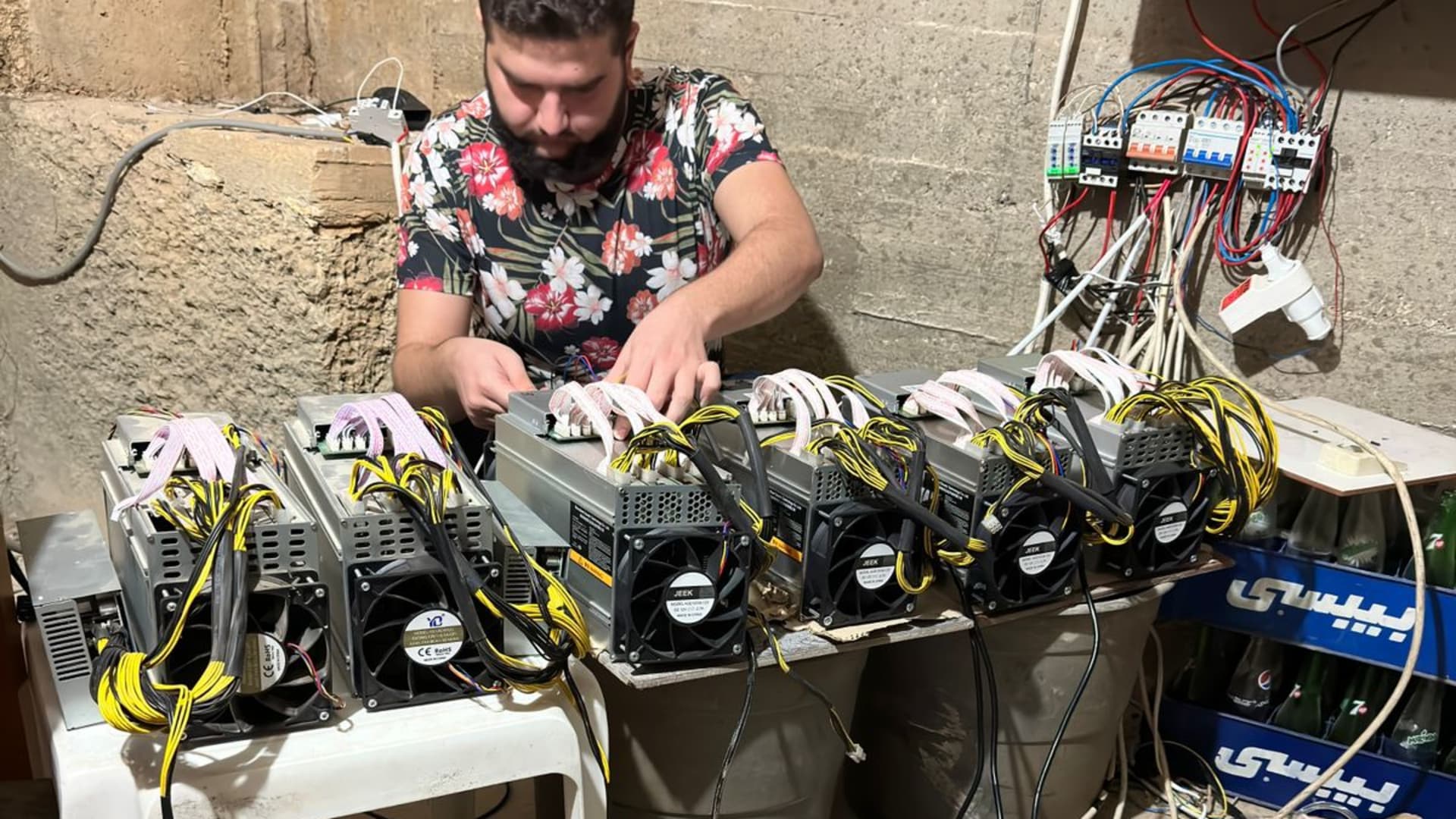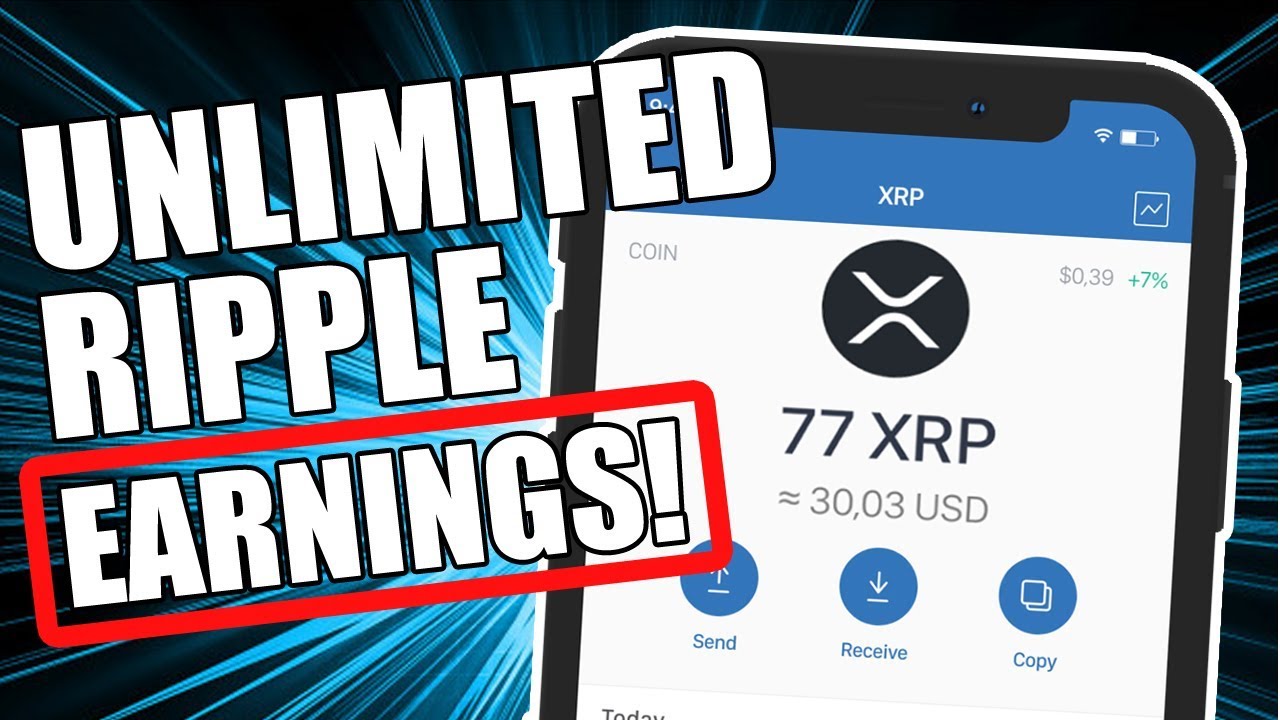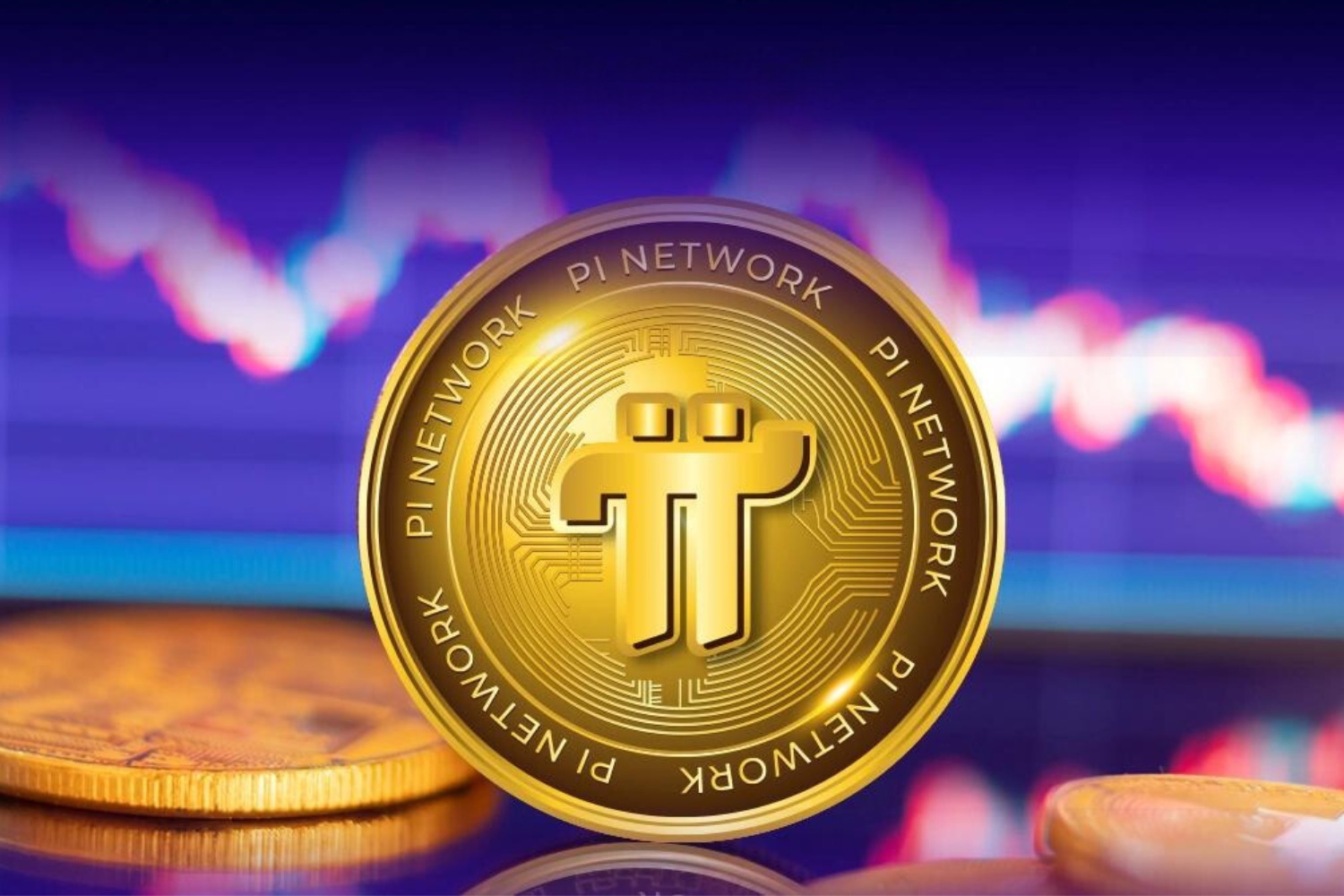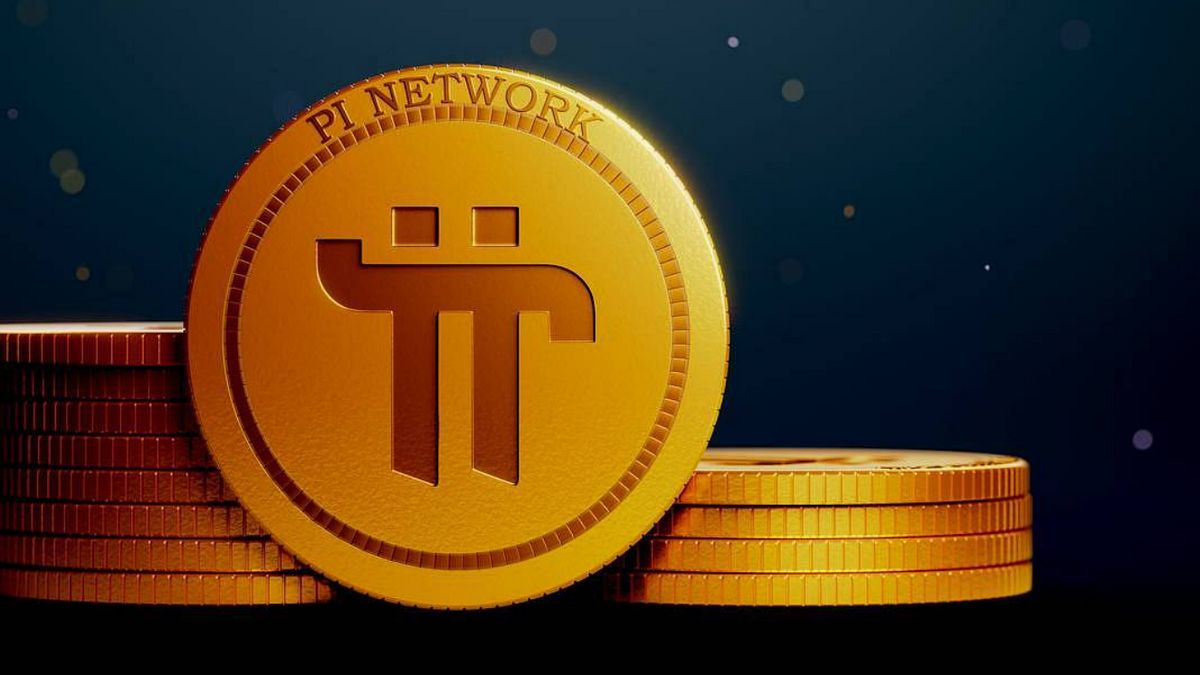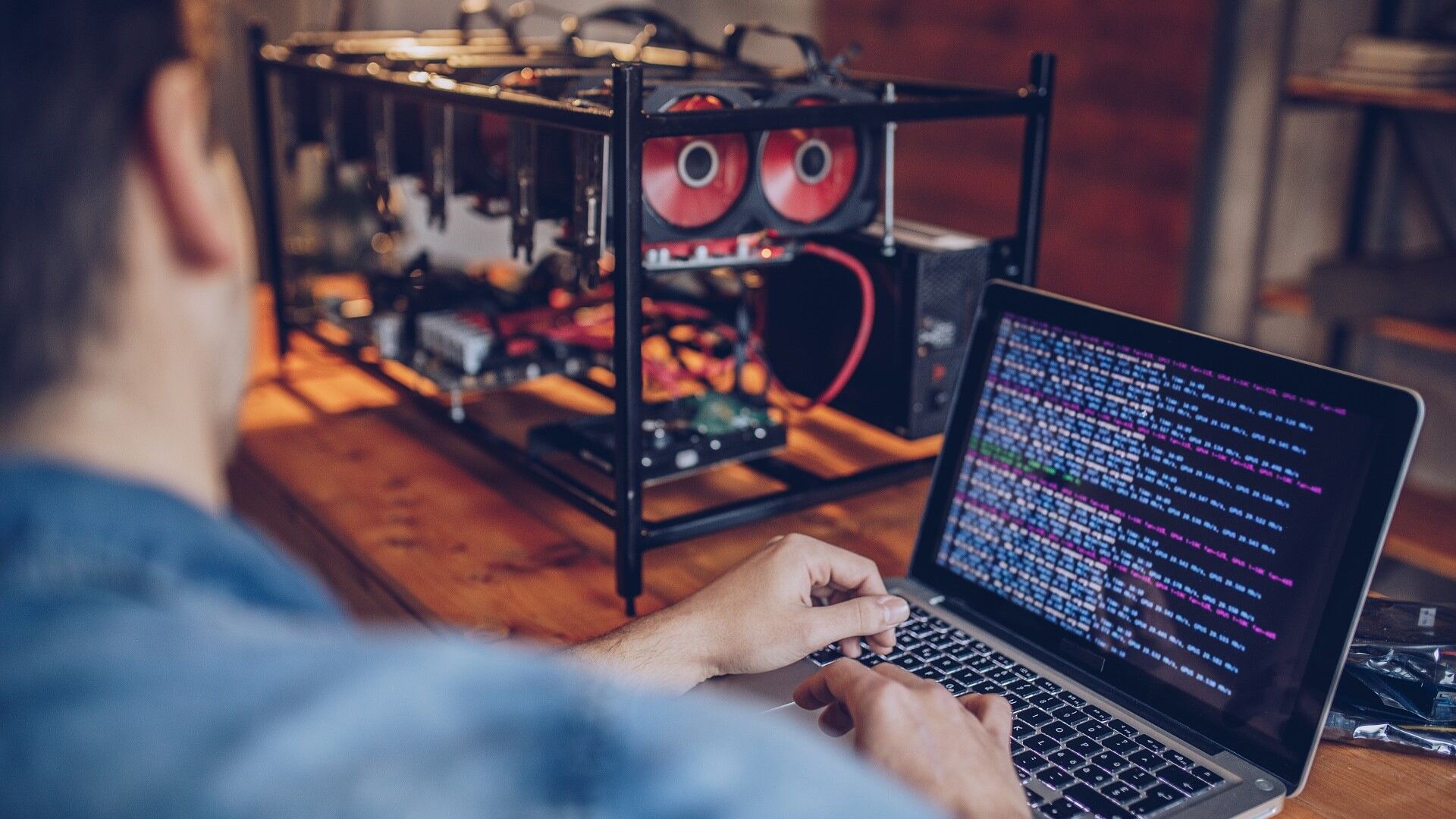Introduction
Welcome to the world of cryptocurrency mining! Cryptocurrencies, such as Bitcoin and Ethereum, have gained immense popularity in recent years, with many investors and enthusiasts eager to get their hands on these digital assets. But how are these cryptocurrencies created? That’s where mining comes in.
Cryptocurrency mining is the process of validating and verifying transactions on a blockchain network and adding them to the public ledger, known as the blockchain. Miners use powerful computers to solve complex mathematical problems, and in return, they are rewarded with newly minted coins.
But mining cryptocurrency is not as simple as it sounds. It requires a specific set of hardware and software, as well as a significant amount of energy and internet connection. Additionally, there are security considerations and the choice between joining a mining pool or mining solo.
In this article, we will delve deeper into the requirements and considerations for mining cryptocurrency. Whether you’re a beginner exploring the world of mining or an experienced miner looking to optimize your operations, this guide will provide valuable insights to help you navigate the world of cryptocurrency mining.
What is Cryptocurrency Mining?
Cryptocurrency mining is the process by which new digital currencies are created and transactions are verified and recorded on a blockchain network. It is an integral part of the decentralized nature of cryptocurrencies, as it ensures the security and integrity of the network.
When a transaction is made using a cryptocurrency, it needs to be verified before it is added to the blockchain. Miners play a crucial role in this verification process. They use powerful computers to solve complex mathematical puzzles that validate the authenticity of transactions. Once a block of transactions is verified, it is added to the blockchain, and the miner is rewarded with a certain amount of cryptocurrency.
The mining process involves a race among miners to solve the mathematical puzzle, as the first miner to solve it gets to add the block to the blockchain and receive the reward. This competitive aspect of mining encourages miners to invest in powerful hardware and software to increase their chances of being the first to solve the puzzle.
It’s important to note that not all cryptocurrencies can be mined. Some cryptocurrencies, like Bitcoin and Ethereum, still rely heavily on mining. However, others, like Ripple and Stellar, use alternative consensus mechanisms that do not involve mining.
Aside from creating new coins and verifying transactions, mining also serves another important purpose – it ensures the security of the blockchain network. The decentralized nature of cryptocurrencies means that there is no central authority to oversee transactions. Instead, the verification process is done by a distributed network of miners, making it resistant to fraud and censorship.
Overall, cryptocurrency mining is a fundamental process that allows for the creation and secure functioning of digital currencies. It not only provides miners with an opportunity to earn new coins but also plays a crucial role in maintaining the integrity and security of cryptocurrency networks.
How Does Cryptocurrency Mining Work?
Cryptocurrency mining is a complex process that involves solving mathematical puzzles to validate transactions and add them to the blockchain. But what exactly happens during the mining process? Let’s take a closer look.
1. Validation of transactions: When a transaction is made using a cryptocurrency, it is broadcasted to the network. Miners collect these transactions and bundle them together into blocks.
2. Hashing: Each block contains a unique identifier called a hash, which is essentially a cryptographic representation of the data within the block. Miners use algorithms to generate these hashes, which require significant computational power.
3. Proof-of-Work: In order to add a block to the blockchain, miners must solve a complex mathematical problem using the hash of the previous block, known as the Proof-of-Work. This process involves repeatedly guessing a random number until a solution is found that meets certain criteria, which is extremely computationally intensive.
4. Finding a solution: Miners compete against each other to find the correct solution to the mathematical problem. The first miner to find the solution broadcasts it to the network and is rewarded with a predetermined amount of cryptocurrency as an incentive for their computational work.
5. Block verification: Once a solution is found, the block is validated by other miners in the network. They verify the solution and make sure that it meets the required criteria. If the block is deemed valid, it is added to the blockchain, and the associated transactions are considered confirmed.
6. Difficulty adjustment: The difficulty of the mathematical problem is adjusted regularly to ensure that new blocks are added to the blockchain at a consistent rate. As more miners join the network, the difficulty increases to maintain a stable block time.
7. Rewards and incentives: In addition to the cryptocurrency earned from adding blocks to the blockchain, miners may also receive transaction fees associated with the included transactions. These incentives serve as motivation for miners to continue participating in the network and securing its operations.
It’s important to note that the mining process requires significant computational power and energy consumption. Miners often invest in specialized hardware, such as graphics processing units (GPUs) or application-specific integrated circuits (ASICs), to increase their chances of solving the mathematical puzzles and earning rewards.
Overall, cryptocurrency mining is a complex and competitive process that plays a vital role in maintaining the security and integrity of blockchain networks. It ensures the validation of transactions and the creation of new coins, incentivizing miners to invest in powerful hardware and contribute to the decentralized nature of cryptocurrencies.
Hardware Requirements for Mining Cryptocurrency
Cryptocurrency mining requires powerful hardware to handle the complex mathematical calculations involved in verifying transactions and adding blocks to the blockchain. The hardware requirements vary depending on the specific cryptocurrency being mined, but there are some general considerations to keep in mind.
1. Processing Power: The most crucial hardware component for mining is the central processing unit (CPU) or graphics processing unit (GPU). These processors are responsible for executing the mathematical algorithms needed to solve the cryptographic puzzles. Miners often opt for GPUs due to their superior performance in parallel processing tasks.
2. Application-Specific Integrated Circuits (ASICs): For popular cryptocurrencies like Bitcoin, specialized hardware in the form of ASICs is commonly used. ASICs are designed specifically for mining and offer significantly higher computational power compared to CPUs and GPUs. They are more efficient in terms of energy consumption and can greatly increase mining profitability.
3. Memory: Sufficient memory, often referred to as RAM, is necessary for efficient mining operations. More memory allows for faster data processing, reducing the time it takes to complete each mining calculation. Miners typically opt for higher memory capacities to enhance their mining performance.
4. Storage: While not as crucial as processing power or memory, having ample storage capacity is recommended for mining. This allows for the storage of the blockchain ledger and any mining software or tools needed. Solid-state drives (SSDs) are preferred for their faster read and write speeds compared to traditional hard disk drives (HDDs).
5. Cooling and Power Supply: Mining operations generate a significant amount of heat, so proper cooling mechanisms are essential. Miners often utilize powerful fans or liquid cooling systems to maintain optimal operating temperatures for their hardware. An adequate and stable power supply is also crucial to ensure uninterrupted mining operations.
6. Internet Connectivity: Stable and reliable internet connectivity is necessary for efficient mining. Miners need to stay connected to the blockchain network to receive and broadcast transactions and participate in the verification process. High-speed internet services with low latency are preferred.
It’s important to note that hardware requirements can vary based on the specific cryptocurrency being mined, as different cryptocurrencies utilize different algorithms and consensus mechanisms. Additionally, the mining difficulty and competition within the network can also impact the hardware requirements.
Before investing in mining hardware, it’s advisable to research the specific requirements of the target cryptocurrency and consider factors such as upfront costs, ongoing maintenance expenses, and potential return on investment. Additionally, staying updated with the latest advancements in mining hardware technology is crucial to stay competitive in the constantly evolving cryptocurrency mining landscape.
Software Requirements for Mining Cryptocurrency
In addition to powerful hardware, miners also need specialized software to facilitate the mining process and connect to the cryptocurrency network. The software requirements for mining cryptocurrency can vary depending on the specific cryptocurrency being mined and the type of hardware being used.
Mining Software:
1. Mining Client: A mining client is the core software that allows miners to connect to the cryptocurrency network. It enables miners to receive transactions, validate them, and add them to the blockchain. It acts as a bridge between the mining hardware and the cryptocurrency network.
2. Wallet Software: A cryptocurrency wallet is necessary for storing and managing the mined digital coins. Miners need to set up a wallet and generate a unique address to receive their mining rewards. Wallet software can be either desktop-based, mobile-based, or web-based, depending on personal preferences and security considerations.
3. Mining Pool Software: Joining a mining pool is a popular option for miners who want to increase their chances of earning rewards more consistently. Mining pool software enables miners to collaborate with others and combine their hashing power to improve the chances of solving mathematical puzzles and earn rewards collectively. Mining pool software typically handles the distribution of rewards among the participating miners.
Monitoring and Optimization Tools:
1. Mining Software Interface: Many mining software clients offer a user-friendly interface that displays real-time data on mining performance, such as hash rate, temperature, fan speed, and energy consumption. These interfaces allow miners to monitor and optimize their mining operations for better efficiency and profitability.
2. Mining Profitability Calculators: Mining profitability calculators help miners estimate the potential profits based on factors such as hardware specifications, electricity costs, mining difficulty, and current market prices of the mined cryptocurrency. These calculators assist miners in deciding which coins to mine and make informed decisions regarding their mining operations.
3. Mining Pool Monitoring Tools: Miners who participate in mining pools can make use of monitoring tools provided by the pool. These tools display statistics such as pool hash rate, miner performance, and earnings distribution. Monitoring tools help users assess the effectiveness of their mining pool participation.
Security Software:
1. Antivirus/Antimalware Software: As with any internet-connected activity, miners should have up-to-date antivirus and antimalware software to protect their mining hardware and associated software from potential threats. This helps ensure the security and integrity of both the mining process and the digital assets being mined and stored.
2. Wallet Security Measures: Miners must take precautions to secure their cryptocurrency wallets. This includes enabling two-factor authentication, using strong and unique passwords, encrypting wallet files, and keeping offline backups of wallet information.
3. Network Security: Miners should also ensure the security of their network connections, especially when joining public mining pools or accessing mining software remotely. Utilizing secure connections, such as Virtual Private Networks (VPNs), can help protect sensitive mining data from unauthorized access.
The choice of mining software depends on the specific cryptocurrency being mined, the type of hardware used, and individual preferences. It’s essential to download software from reputable sources and stay updated with the latest versions to benefit from bug fixes, security patches, and performance optimizations.
Energy Requirements for Mining Cryptocurrency
Cryptocurrency mining is known for its high energy consumption, as the process requires significant computational power to solve complex mathematical puzzles. The energy requirements for mining can vary depending on several factors, including the type of cryptocurrency, the mining hardware used, and the mining operations’ scale.
1. Proof-of-Work Consensus Algorithm: Most cryptocurrencies, such as Bitcoin and Ethereum, rely on the Proof-of-Work (PoW) consensus algorithm, which requires miners to compete and solve complex mathematical problems. This algorithm consumes a considerable amount of energy as miners continuously perform calculations to find a valid solution.
2. Hashing Power and Difficulty: The energy consumption in mining is directly related to the computational power, or hashing power, of the mining hardware. As more miners join the network or upgrade their hardware to increase their hashing power, the mining difficulty increases to maintain a consistent block time. This results in higher energy consumption as miners require more computational resources to solve increasingly difficult puzzles.
3. Hardware Efficiency: The energy efficiency of the mining hardware plays a crucial role in determining the overall energy consumption. Specialized mining hardware, such as Application-Specific Integrated Circuits (ASICs), are designed to offer better performance per watt compared to general-purpose hardware like CPUs or GPUs. Mining hardware with higher efficiency can help reduce energy costs and increase mining profitability.
4. Cooling Systems: Mining operations generate a substantial amount of heat due to the constant operation of mining hardware. Cooling systems, such as fans or liquid cooling, are required to dissipate this heat and maintain optimal operating temperatures. Energy consumption increases as cooling mechanisms are powered to maintain the hardware’s stability and prevent overheating.
5. Electricity Costs: The cost of electricity is a significant factor in mining profitability. As mining operations consume a large amount of electricity, the cost of electricity can heavily impact the profitability of mining activities. Miners should consider electricity rates, especially in regions with higher energy costs, and assess their mining operations’ potential profitability.
6. Renewable Energy Sources: With the growing concerns about the environmental impact of cryptocurrency mining, many miners are turning to renewable energy sources to power their operations. By utilizing solar, wind, or hydroelectric power, miners can reduce their carbon footprint and mitigate the negative environmental impact associated with energy-intensive mining.
7. Energy Optimization: Miners can implement various strategies to optimize energy consumption. These include using energy-efficient hardware, optimizing mining software settings, and adopting energy-saving measures such as utilizing the sleep mode when mining activity is low. Additionally, monitoring and managing the power consumption of ancillary equipment, such as cooling systems and networking devices, can contribute to overall energy efficiency.
It’s important to note that the energy requirements for mining can vary significantly among different cryptocurrencies. Some cryptocurrencies, such as Litecoin, have implemented algorithms that require less computational power and, therefore, consume less energy during mining.
Miners should carefully consider the energy requirements and associated costs when engaging in cryptocurrency mining. Evaluating the balance between energy consumption, mining profitability, and environmental impact is crucial in creating sustainable and efficient mining operations.
Internet Connection Requirements for Mining Cryptocurrency
A stable and reliable internet connection is an essential component for successful cryptocurrency mining. The quality of the internet connection can directly impact the efficiency and profitability of mining operations. Here are the key considerations for internet connection requirements in cryptocurrency mining.
1. Bandwidth: Mining involves constant communication with the blockchain network, downloading and broadcasting transactions, and receiving updates on the mining progress. A sufficient amount of bandwidth is necessary to handle the data transfer and ensure smooth communication between the mining hardware and the network. Higher bandwidth allows for faster synchronization with the blockchain and minimizes communication delays between the miner and the network.
2. Latency: Low latency, or delay, is crucial in mining as it affects the speed at which mining hardware can communicate with the network. Miners need to quickly receive and relay information to stay synchronized with the blockchain and compete effectively with other miners. A lower latency connection reduces the time between submitting mining solutions and receiving feedback from the network, which can improve mining efficiency.
3. Connection Stability: Mining requires a constant and stable internet connection to ensure uninterrupted communication with the cryptocurrency network. Frequent disconnections or unstable connections can disrupt the mining process, leading to missed opportunities and decreased mining efficiency. Miners should choose an internet service provider (ISP) that offers reliable connections and consider backup solutions, such as redundant internet connections or mobile hotspot backups, to minimize downtime.
4. Security and Privacy: Internet security is crucial in cryptocurrencies mining to protect the mining hardware and the privacy of mined assets. Miners should ensure their internet connection is secure to prevent unauthorized access, hacking attempts, or information leaks. Utilizing encryption methods, such as virtual private networks (VPNs) and firewalls, can enhance the security of mining operations and safeguard sensitive mining data.
5. Location Considerations: The geographical location of the mining operation can impact the quality of the internet connection. Factors such as proximity to the nearest network nodes, the quality of local infrastructure, and the availability of high-speed internet service providers can influence the overall connectivity and latency. Miners should research the internet infrastructure in their region and select a suitable location based on connectivity options.
6. Redundancy and Backup Plans: Mining operations can benefit from redundancy and backup plans to minimize the impact of network outages or connection issues. Redundant internet connections from different ISPs or backup solutions like mobile data plans can provide continuity in case of primary connection failure. Implementing automated failover mechanisms can help ensure that mining operations continue uninterrupted even in the event of internet connectivity problems.
Miners should carefully assess their internet connection requirements based on the specific cryptocurrency being mined, hardware capabilities, and their mining goals. Prioritizing reliable and low-latency connections can significantly enhance mining efficiency and profitability, allowing miners to stay competitive in the continuously evolving cryptocurrency mining landscape.
Security Considerations for Cryptocurrency Mining
While cryptocurrency mining can be a lucrative endeavor, it’s essential to prioritize security measures to protect both the mining operations and the mined digital assets. Here are some key security considerations for cryptocurrency mining:
1. Secure Wallets: Miners must ensure the security of their cryptocurrency wallets, where the mined coins are stored. Implementing strong passwords, enabling two-factor authentication, and utilizing hardware wallets or cold storage solutions can help protect against unauthorized access and potential hacking attempts.
2. Mining Software Security: Miners should only download mining software from reputable sources to reduce the risk of malware or viruses that may compromise their mining operations. Regularly updating mining software and applying security patches helps to address any identified vulnerabilities and provide enhanced security features.
3. Network Security: Securing the network connection used for mining is vital. Utilizing encryption protocols such as VPNs (Virtual Private Networks) can protect mining communications from eavesdropping and ensure data privacy. Miners should also secure their home or office network with strong passwords, firewalls, and regular firmware updates.
4. Protection Against Malware and Phishing Attacks: Miners should use antivirus and anti-malware software to protect against malicious software that can compromise mining operations or steal sensitive information. Additionally, being cautious of phishing attacks, avoiding suspicious links or downloads, and verifying the authenticity of mining-related websites and communication can prevent falling victim to scams or identity theft.
5. Regular Backups: It’s important to regularly back up mining-related data, such as wallet files, mining software configurations, and private keys. This ensures that in the event of hardware failure, loss, or theft, miners can recover their mining operations and access their mined assets.
6. Security Auditing: Periodically reviewing the security measures implemented in mining operations is essential. Conducting security audits or engaging third-party security experts can help identify potential vulnerabilities and weaknesses that could compromise the integrity of mining operations.
7. Physical Security: Physical security measures are crucial, especially for large-scale mining operations. Securely storing mining hardware in controlled environments, implementing access controls or surveillance systems, and employing physical deterrents can help safeguard mining equipment from theft or damage.
8. Educating Users: Miners should continually educate themselves and their team members on best practices for security. This includes staying informed about the latest security threats, understanding common attack vectors, and regularly training users on identifying and mitigating potential security risks.
9. Monitoring and Alerting: Implementing robust monitoring systems that track mining operations, network traffic, and hardware performance can help identify anomalies or unauthorized access attempts. Prompt alerts and response mechanisms enable miners to take immediate action in case of security breaches.
By implementing comprehensive security measures, miners can minimize the risks associated with cryptocurrency mining and protect their mining operations and digital assets from potential threats. Prioritizing security from the start can result in a safer and more secure mining experience.
Mining Pools: Joining vs. Going Solo
When it comes to cryptocurrency mining, miners have the option to either join a mining pool or go solo. Each approach has its own advantages and considerations, and miners should carefully evaluate which option suits their mining goals and circumstances.
Joining a Mining Pool:
1. Increased Chances of Earning Rewards: By joining a mining pool, miners combine their computing power with other participants, increasing the pool’s overall hashing power. This collaborative effort improves the chances of solving complex mathematical puzzles and earning mining rewards more consistently. While individual rewards may be smaller, they are distributed more frequently, resulting in a steadier income stream.
2. Stable and Predictable Income: Mining pools provide a more predictable income stream compared to solo mining. Since rewards are distributed based on the contributed hashing power, miners can estimate their earnings more accurately. This stability can be beneficial for miners looking for a regular income or those with limited computational resources.
3. Lower Variance: Mining pools offer a lower variance in rewards compared to solo mining. While solo mining may result in occasional large rewards if a miner successfully solves a block, there is a higher chance of longer periods without any rewards. Mining pools distribute rewards more evenly among participants, reducing the impact of mining luck.
4. Shared Operational Costs: Joining a mining pool allows miners to share operational costs, such as electricity and cooling expenses, with other participants. This can be particularly advantageous for miners with limited resources or those operating in regions with high energy costs.
Going Solo:
1. Higher Potential Rewards: Solo mining offers the potential for higher individual rewards. If a miner successfully solves a block, they will receive the entirety of the block reward and any associated transaction fees. This can result in substantial earnings, especially for miners with significant computational power.
2. Increased Control and Autonomy: Solo miners have complete control over their mining operations, including the choice of mining software, hardware configurations, and network connectivity. This level of autonomy allows miners to customize their setups according to their preferences and implement specific optimizations that may not be possible in a pooled mining environment.
3. Supporting Network Decentralization: Solo mining contributes to the decentralization of cryptocurrency networks. By operating independently, solo miners help maintain the decentralized nature of cryptocurrencies, as they validate transactions and add blocks to the blockchain network without relying on third-party mining pools.
4. Technical Knowledge and Resources: Successful solo mining requires a higher level of technical knowledge and significant investments in hardware, electricity, and cooling infrastructure. Solo miners must have the expertise to troubleshoot any issues that may arise and continuously stay updated with the latest mining software and network updates.
Ultimately, the decision to join a mining pool or go solo depends on factors such as computational resources, risk tolerance, operational costs, and the desire for stable income versus potential higher rewards. Miners should carefully assess their priorities and objectives and understand the potential risks and benefits associated with each mining approach.
The Pros and Cons of Mining Cryptocurrency
Mining cryptocurrency can be an attractive venture for individuals looking to earn digital assets or support the underlying blockchain network. However, it’s important to consider the pros and cons before diving into the world of mining.
Pros of Mining Cryptocurrency:
1. Earning Potential: Mining offers the potential to earn cryptocurrency as a reward for participating in the network and validating transactions. Successful miners can accumulate digital assets that may appreciate in value over time, potentially resulting in substantial profits.
2. Support to the Network: By mining cryptocurrency, miners play a crucial role in maintaining the security and integrity of the blockchain network. Their computations verify transactions, add blocks to the blockchain, and contribute to the decentralization and overall robustness of the network.
3. Participation in Blockchain Technology: Mining allows individuals to actively engage with blockchain technology and gain a deeper understanding of its workings. Miners become part of a global network of participants, evolving alongside one of the most innovative technological advancements of our time.
4. Potential for Network Consensus: In some blockchain networks, miners may also have the opportunity to participate in the consensus process, where they vote on proposed changes or updates to the network’s protocol. This gives miners a sense of influence and ownership in the direction of the cryptocurrency they are mining.
Cons of Mining Cryptocurrency:
1. High Energy Consumption: Mining is energy-intensive, with powerful hardware requiring significant electricity consumption. This can result in high operational costs and environmental concerns, particularly if the electricity source is not from renewable or sustainable sources.
2. Technological Complexity: Mining involves technical knowledge and expertise in areas such as hardware setup, software configuration, and network connectivity. Miners must continuously stay updated with the latest advancements and adapt their operations to remain competitive in the ever-evolving mining landscape.
3. Cost of Equipment and Infrastructure: Mining requires upfront investments in specialized hardware, such as ASICs or high-end GPUs, which can be expensive. In addition to hardware costs, miners may need to invest in cooling systems, reliable internet connections, and secure storage solutions, adding to the overall operational expenses.
4. Market Volatility: The value of cryptocurrencies can be highly volatile, subject to frequent price fluctuations and market speculation. This volatility can impact the profitability of mining operations, as the value of the mined assets may not always align with operational costs.
5. Mining Difficulty: As more miners join the network, mining difficulty increases, requiring more computational power to solve complex cryptographic puzzles. This increased competition may reduce individual mining rewards and make it more challenging for new miners to enter the field.
It’s crucial for prospective miners to carefully evaluate these pros and cons, considering their financial resources, technical capabilities, and risk tolerance. Conducting thorough research, understanding the specific requirements of the cryptocurrency being mined, and assessing the market conditions are key to making informed decisions and maximizing the potential benefits of mining cryptocurrency.
Conclusion
Cryptocurrency mining is a complex and dynamic process that offers both opportunities and challenges. It allows individuals to earn digital assets, contribute to the security of blockchain networks, and participate in the revolutionary world of decentralized finance. However, it’s important to approach mining with a clear understanding of the requirements and considerations involved.
From hardware and software requirements to energy consumption and security considerations, miners must carefully assess the resources, costs, and potential rewards of their mining operations. Joining a mining pool may provide a more stable income stream and reduced variance, while going solo can offer higher potential rewards and more autonomy in operations.
Efficient mining operations require powerful hardware, reliable internet connections, and secure storage solutions for digital assets. Miners should prioritize security measures such as secure wallets, robust network security, and regular backups to protect against potential threats and breaches.
As with any investment, there are risks involved, such as market volatility, high energy consumption, and technological complexity. Miners should be prepared to adapt to changing market conditions and continuously educate themselves on the latest developments in the mining landscape.
Ultimately, the decision to embark on cryptocurrency mining should be based on a thorough evaluation of individual circumstances, including financial resources, technical capabilities, and risk tolerance. Mining can be a rewarding and lucrative venture when approached with diligence, caution, and a deep understanding of the intricacies of this evolving industry.
By staying informed, embracing advancements in mining technology, and carefully managing resources, miners can position themselves for success in the captivating world of cryptocurrency mining.







